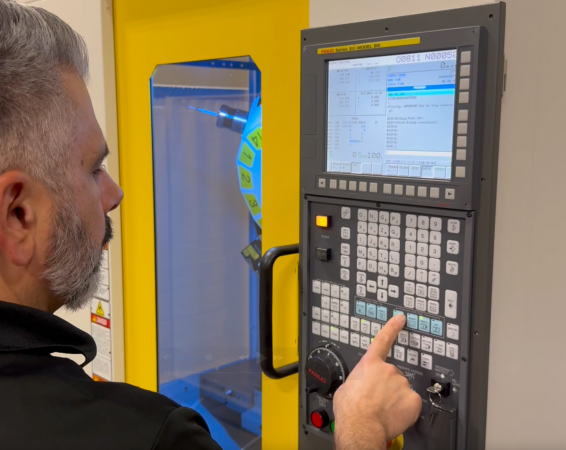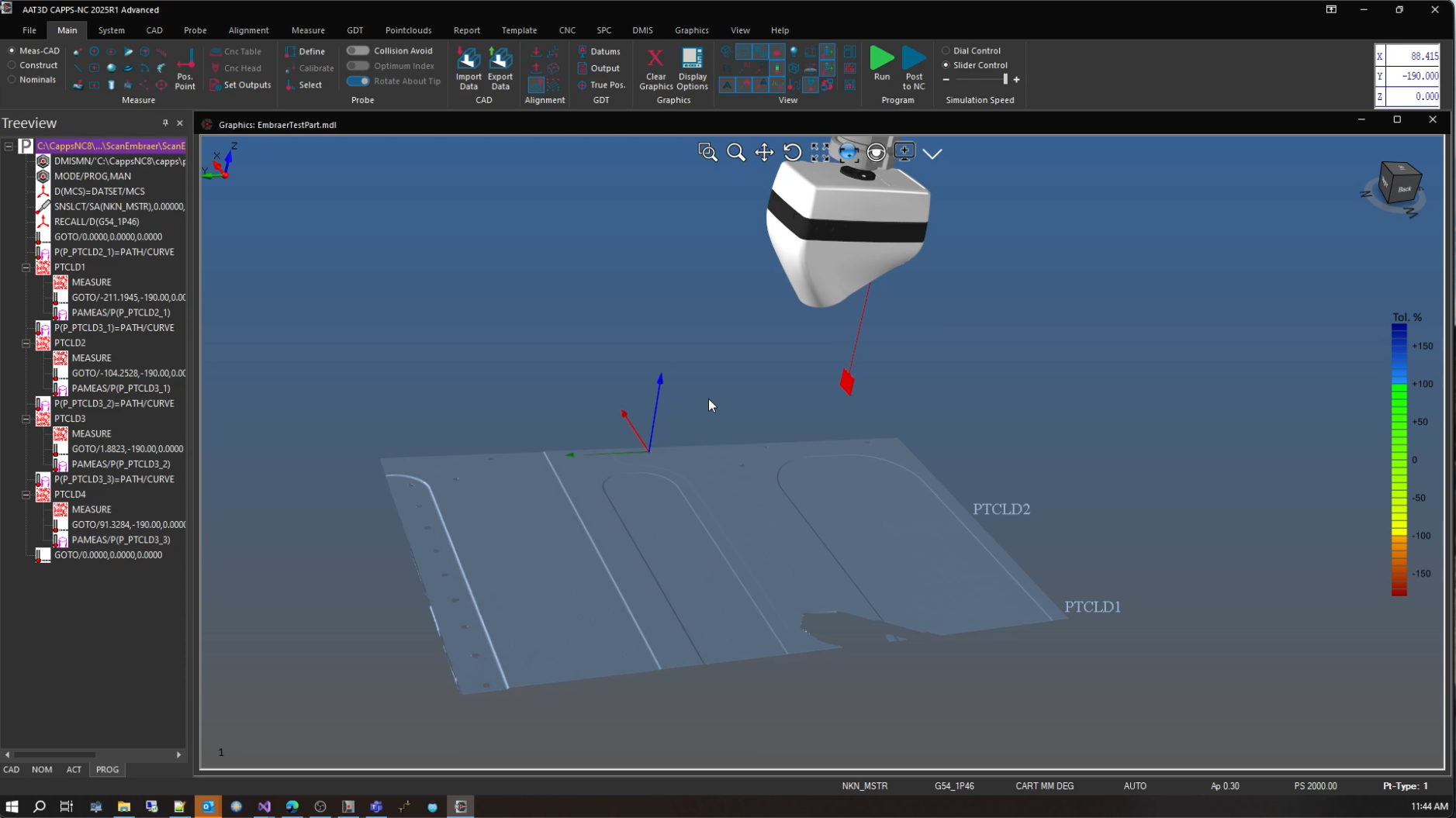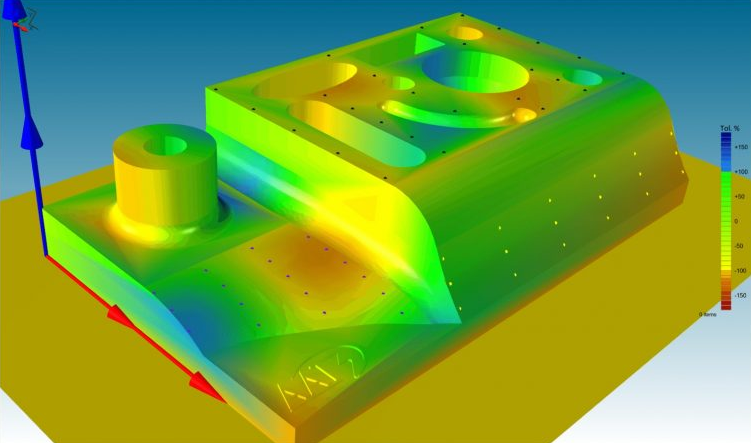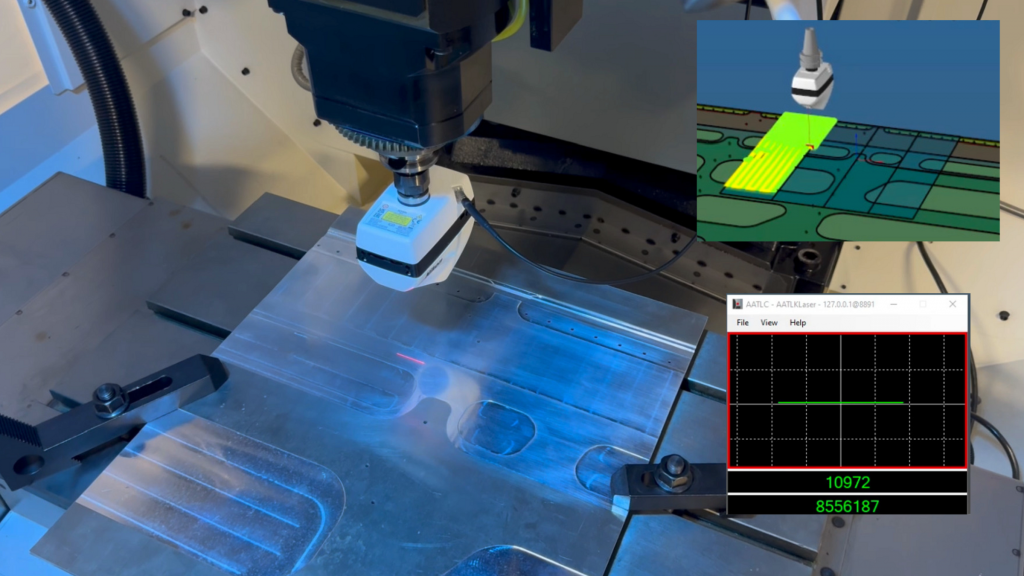CNC Machines Gain Real-Time Metrology With CAPPS-NC
In today’s competitive manufacturing environment, efficiency and precision are inseparable. Dimensional measurement has long been an integral part of production, ensuring that every part conforms to its design intent. Yet as digital technologies evolve, the boundary between manufacturing and measurement continues to blur. With the advent of advanced laser line sensors, CNC machine tools are transforming from pure machining centers into intelligent, data-driven manufacturing systems — capable of inspecting, learning, and adapting in real time. Applied Automation Technologies (AAT3D) has been at the forefront of this transformation with its CAPPS-NC software, which enables real-time, on-machine measurement through the integration of laser line scanners directly into CNC machine tools.
From Touch Probes to Laser Line Scanning

The integration of measurement systems within machine tools is not new. For decades, touch probes have allowed CNC machines to verify dimensions directly on the shop floor, reducing the need for part transfer to a coordinate measuring machine (CMM). However, as production demands have increased, so has the need for faster, higher-density measurement data that traditional probes cannot provide.
Manufacturers have responded with analog scanning probes that collect continuous surface data. These probes, such as Renishaw’s Sprint system, can capture hundreds of points per second — significantly improving inspection speed. Yet, the industry’s latest leap forward comes from non-contact laser sensors, capable of scanning complex surfaces in a fraction of the time while maintaining exceptional precision.
Laser Line Scanner Integration on CNC Machine Tools
Laser line scanners project a line of laser light onto a surface and capture thousands of data points instantaneously. When mounted on a multi-axis CNC machining center, these sensors transform the machine into a real-time metrology system.
 The integration, however, is technically challenging. Each scan produces a dense point cloud in the sensor’s local coordinate system, which must be mathematically transformed into the CNC’s machine coordinates. This requires careful sensor calibration, geometric modeling, and synchronization with machine motion to ensure that every point in the cloud corresponds precisely to the tool’s spatial position.
The integration, however, is technically challenging. Each scan produces a dense point cloud in the sensor’s local coordinate system, which must be mathematically transformed into the CNC’s machine coordinates. This requires careful sensor calibration, geometric modeling, and synchronization with machine motion to ensure that every point in the cloud corresponds precisely to the tool’s spatial position.
Physically, the laser sensor can be mounted to the machine spindle via a dedicated attachment bracket, allowing it to be stored in the tool magazine and automatically exchanged like any other cutting tool. This innovation enables automated inspection cycles within the machining process, minimizing operator intervention and downtime.
High-Density Point Clouds for Diverse Materials
The performance of laser line scanners has been tested across a wide range of materials — from shiny metal calibration balls to carbon fiber composites and black plastics — with consistently clean, reliable data. The high-density point clouds generated directly on the machine can be used to:
-
Verify part geometry and GD&T characteristics
-
Extract curves and features from complex surfaces like airfoils
-
Detect deviations from CAD models
-
Feed correction data back into the machining cycle for adaptive control
This last capability, feedback-driven correction, is what enables adaptive manufacturing, where the CNC machine adjusts its cutting path or parameters based on real measurement data.
Turning the Machine Tool into a CMM
Transforming a CNC machine into a metrology-grade device requires not only hardware but also software and calibration rigor. Unlike CMMs, machine tools operate under thermal loads, cutting forces, and dynamic stresses. To achieve reliable measurement results, systems must:
-
Monitor and compensate for geometric and thermal drift
-
Periodically verify geometry using ball bar and calibration artifacts
-
Maintain synchronized coordinate frames between the laser, the probe, and the spindle
Once calibrated, the machine can perform CMM-style inspections using both contact and non-contact sensors, achieving high measurement accuracy without ever removing the part from the fixture.
Metrology Software: The Digital Brain of Adaptive Manufacturing
At the heart of this capability lies advanced metrology software, capable of:
- Offline programming using CAD models and DMIS-based standards
- Bi-directional communication with the CNC controller for real-time feedback
- Automatic feature extraction from dense point cloud data
- Autonomous execution of measurement cycles without operator input
The CAPPS-NC software functions as a digital twin of the measurement environment, allowing simulation, collision avoidance, and automatic generation of inspection paths. Results are processed in real time and used to update the CNC’s work offsets, tool wear parameters, or even regenerate machining programs.
Adaptive Manufacturing: Closing the Loop
The ultimate goal of integrating laser line scanning into CNC systems is to achieve closed-loop, adaptive manufacturing.
“By integrating laser line scanning directly into the CNC process, we’re transforming measurement from a separate inspection task into a real-time manufacturing function,” said Ray Karadayi, CEO and Founder of AAT. “It’s a critical step toward truly adaptive, data-driven production.”

Here’s how it works in practice:
Pre-Process: The laser scans datum features to establish the part coordinate system, automatically aligning the CAD model with the physical part.
In-Process: The system measures critical surfaces to assess tool wear, thermal drift, or part deformation, and immediately applies compensation.
Post-Process: A full scan verifies the final geometry, producing an inspection report comparable to that of a CMM.
The data can also be used for NC program reposting; recalculating tool paths based on the part’s actual geometry. This is particularly valuable for large, flexible, or composite structures in aerospace and automotive manufacturing, where parts often deviate from their nominal shape due to thermal or fixturing stresses. By adapting tool paths on-the-fly, manufacturers can eliminate scrap, reduce rework, and cut setup time dramatically.
The integration of laser line scanning delivers measurable advantages across the production lifecycle:
-
Reduced inspection time
-
Automated feedback and correction loops
-
Improved process stability and yield
-
Enhanced productivity and quality assurance
Shaping the Future of Smart Manufacturing
As Industry 4.0 continues to unfold, integrated metrology is becoming a cornerstone of smart manufacturing. The convergence of machine tools, sensors, and metrology software enables a level of process intelligence once confined to laboratory CMMs.
 The integration of laser line scanning on CNC machine tools marks a pivotal step toward this vision. By transforming measurement from a post-process validation into a real-time manufacturing tool, manufacturers can achieve true adaptive control — improving precision, productivity, and profitability simultaneously.
The integration of laser line scanning on CNC machine tools marks a pivotal step toward this vision. By transforming measurement from a post-process validation into a real-time manufacturing tool, manufacturers can achieve true adaptive control — improving precision, productivity, and profitability simultaneously.
In conclusion, the ability to measure, analyze, and correct within the same system redefines the concept of dimensional control. Laser line scanner integration doesn’t just make machines smarter — it makes manufacturing self-aware. As more factories adopt these technologies, the traditional boundaries between machining and metrology are fading, paving the way for the fully adaptive, data-driven factory of the future.
“The future of manufacturing lies in machines that think,” states Ray Karadayi. “When metrology becomes an active part of the machining process, every CNC transforms into an intelligent system that not only produces parts, but learns from them — driving us toward a truly self-optimizing, data-driven factory.”
For more information: www.aat3d.com








